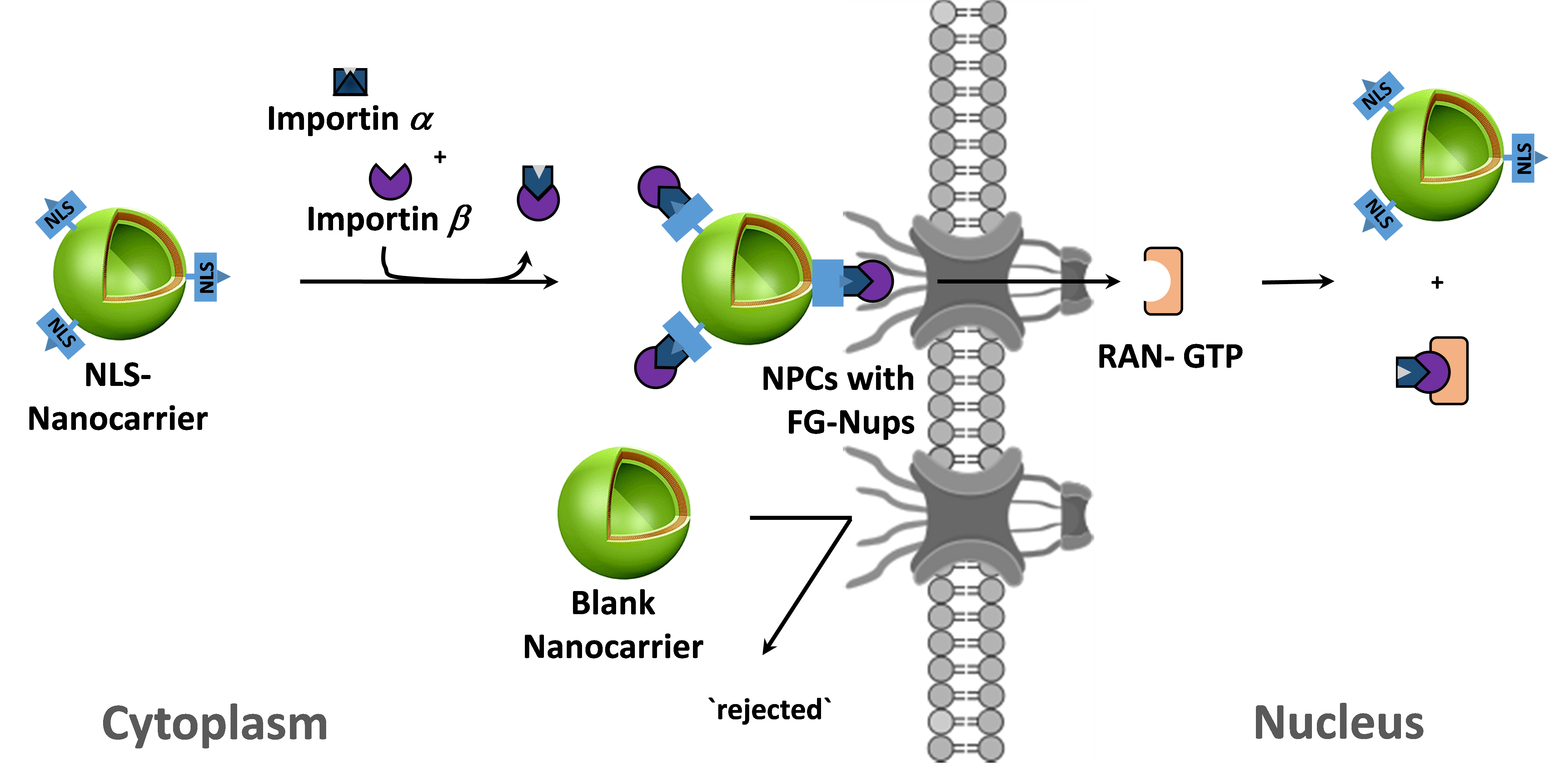The selective transport of functional nanocarriers into cell nuclei via nuclear pore complexes
In eukaryotes, the selective substance exchange between the cytoplasm and the nucleus is an essential process to execute cell function and proliferation. Bio-macromolecules, when tagged with a nuclear localization sequence (NLS), are recognized by the cell intrinsic nuclear import machinery and form stable complexes with transport regulating receptors (e.g. importins).[1] For a cargo to be actively transported into the nucleus, it has to cross the nuclear envelope and thereby, it transverses through ~ 50 nm wide channel-like protein arrangements termed nuclear pore complexes (NPCs).[2] Here, multivalent interactions between the NPC constructing nucleoporins (FG-Nups) and the cargo on-bound importins drive its initial up-take into the NPC whilst RAN-GTP finalizes the release of the cargo into the nuclear cavity. Although nucleocytoplasmic transportation mechanisms have been studied extensively during the last decades, it remains challenging to analyze how large, deformable objects enter into the NPC.[3] On this account, we are applying a bottom-up strategy to fabricate artificial `cargoes` that mimic natural translocation mechanisms. Specifically, we are engineering nanometer‐sized hybrid-polymer vesicles that are easily tuneable in size, membrane flexibility and allow for their surface-attachment with transport receptors. With this in hand, we are studying how structural cargo properties translate to the NPC uptake kinetics and uptake efficiency.

[1] Stewart et al., Nat Rev Mol Cell Biol 8, 195-208 (2007).
[2] Kabachinski et al., J. Cell Sci. 128, 423-429 (2015).
[3] Grunwald et al., Nature 475, 333-341 (2011).